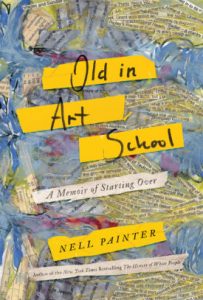 Inspirational at any age (New Jersey, New York, Rhode Island, California, 2005 to present): When a leading historian in the United States writes she was “born to paint,” we understand her need for creativity. That still doesn’t explain why at 64 an endowed professor at Princeton with an extensive list of accomplishments, awards, and honors would give all that up to become “An Artist.” Yet that’s exactly what Nell Irvin Painter did. Why?
Inspirational at any age (New Jersey, New York, Rhode Island, California, 2005 to present): When a leading historian in the United States writes she was “born to paint,” we understand her need for creativity. That still doesn’t explain why at 64 an endowed professor at Princeton with an extensive list of accomplishments, awards, and honors would give all that up to become “An Artist.” Yet that’s exactly what Nell Irvin Painter did. Why?
For all the fascinating, artful, and enlightening aspects of Painter’s terrific memoir, her answer is fairly straightforward: because “she wanted to.”
The complete answer is a bit more complicated than that, but there’s great truth to the author’s inner passion and determination to lose herself in the “tactile sweetness” of the visual arts, quite different than her analytical career. Applying the same seriousness, curiosity, and discipline that led to her historian achievements, “intellectual sophistication” turned out to be a stinging obstacle the second time around.
For Painter, “creative ambition” seemed to have no bearing on becoming “An Artist” in the “Art World” (as opposed to thriving quietly in the world of art.) The Art World translates into getting noticed at galleries and museums, causing collectors to crave your work. Getting noticed, her art teachers deemed, was something “you’re born with.”
They told her she’d “never be an artist,” a stunning rebuke to someone whose seen the benefits of scholarship, hard work, practice, persistence. Here Painter’s deeply personal memoir expands philosophically, challenging “ontology or epistemology?” In this layman’s mind, likened to the Nature versus Nurture psychological dispute.
“Who defines what constitutes “An Artist”? the author asks, examines, adjusts to, and strives for in defiance of the 21st century Art World, at odds with her “twentieth century eyes.”
As you get to know Nell Painter through her intimate memoir, it becomes crystal-clear that dabbling on her own in the visual arts was not an option; jumping all in her only authentic choice. “After a lifetime of historical truth and political engagement with American society,” she became driven to express visually her perspectives on “the state of the world and about history” not just for the sheer joy of it but to be heard.
It’s important to point out that Painter had a fantastic role model for reinventing herself: at 65, her mother, Dona Irvin, spent ten years researching and writing her first book (The Unsung Heart of Black America), and at 75 devoted another ten writing her memoir (Wish I Could Look That Good When I’m That Old: An Older African-American Speaks to All Women in All of America.)
So the artist-striving historian plunges into art classes and art schools (and later residences) with remarkable youthful zest, mighty aspirations, a supportive husband (Glenn teaches at Rutgers University), and the means to do so.
The visual arts was not an entirely foreign notion. In the ’60s, the author lived in Ghana where she fell in love with colors: “a humid world of tropical contrasts and color-wheels.” Vibrant colors match her vibrant spirit, which is why her gray period at graduate arts school was so unsettling and compelling to the reader (see why below).
The author’s parents moved to California, where she experimented with sculpture as an undergraduate anthropology major at Berkeley. Later, her love of drawing, “of really seeing what I was looking at,” finds its way into some of her seven lauded books on what it means to be black and white in America. These include: Sojourner Truth, A Life, A Symbol; Creating Black Americans: African American History and Its Meanings, 1619 to the Present; and The History of White People she finished while juggling the pressures of graduate art school – which she came to view as “man’s inhumanity to man” – at a wrenching emotional period when her mother was dying and her father was chronically, clinically depressed.
Even before Painter left Princeton, she had a plan, taking two painting classes there. Followed by an intensive summer at the New York Studio School in Manhattan drawing and painting, a tiring commute (leaving her beloved home in the multi-cultural Ironbound district of Newark at 6am, returning at night). Yet this “marathon” delights and stirs her creative soul. Unlike her undergraduate and graduate art experiences, which were painfully humbling.
At the Mason Gross School of the Arts at Rutgers, a student bluntly asked how old she was. It was the first time Painter had thought of herself as old. She’d already spent a lifetime fighting two other labels: being black and a woman in America. Not seeing herself as old until then speaks volumes about how progressive those 20th century eyes are.
Painter presses on. Rejected by her top graduate choice, Yale’s School of Art, she moved solo to Providence to attend the Rhode Island School of Design, RISD, her second preference. Here she soon found herself profoundly alone, marginalized and discriminated on account of age, sex, ethnicity, intellectualism, and purposefulness to incorporate “history history” into her art.
Painter approached RISD with the same fire in her belly as ever, but over time the outrageous lack of respect for who she was as a human being, and a person of exceptional productivity and credentials, and of course her art wore her down.
The historian-turned-artist does not mince words. Candidly and sharply, and sometimes profanely, she describes how badly RISD demoralized her. This shocks the reader, since we perceive Painter as wonderfully confident. “I was a star and a dud, simultaneously,” she asserts.
We don’t agree. To us she’s a shining star whose starred memoir treats us to absorbing discussions on the concepts, techniques, materials, and historical contexts of Painter’s Artmaking, engaging us through colorful prose and images of her work that accentuate the 320+ pages. That’s a total of 95 pictures, provided in a List of Images Appendix. These pale in comparison to the whole body of the artist’s contemporary works.
The range, conceptualism, and activism of these cutting-edge creations include: charcoal drawings, paintings, collages, silkscreen prints, woodcuts, lithographs, linoleum cuts, silhouettes, and something Painter landed on she calls “manual + digital:”
“Using found images and digital manipulation, I reconfigure the past and revision myself through self-portraits,” relishing the “freedom to be totally self-centered,” exploring where she fits in the world. … “Race the exhausting, existential reality of any black artist becoming known in America.”
Race is never far from her bold compositions and focus, intensified by her conclusion that “the Art World is as racist as hell and unashamed of it.”
All the more noteworthy then is the artist’s exuberance for everything involved in making art. From “the paper, the charcoal, the canvas, the setups, the model, the perspective, the shadows, the colors, the smell.” Everything except succumbing to caring about how others judged her work and looked down at her. When the “sacred” graduate art school “crits” failed to take her seriously, she eventually sought advice on the outside from art friends and colleagues, which buoyed her.
Since you can’t take the historian out of the artist, Old in Art School is also an art history primer on artists Painter admires. Most are modern, abstract expressionists and black artists, but by no means all of them.
Nell Irvin Painter’s art journey is an impressive uphill battle to be noticed. All you have to do is scroll through this website – http://www.nellpainter.com/art.html#beamerica – to appreciate how buzz worthy her artwork is. Just what the Art World is looking for! And she did it her way.
Painter’s mother was her inspiration. Now she’s ours.
Lorraine
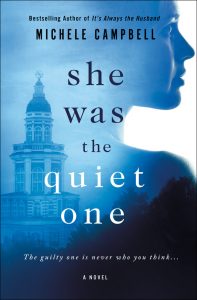
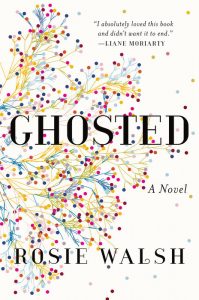 Figuring out a something-gone-wrong love story (Cotswolds, England and LA, present-day): Ghosting as it applies to relationships is on the rise due to social media. According to the
Figuring out a something-gone-wrong love story (Cotswolds, England and LA, present-day): Ghosting as it applies to relationships is on the rise due to social media. According to the 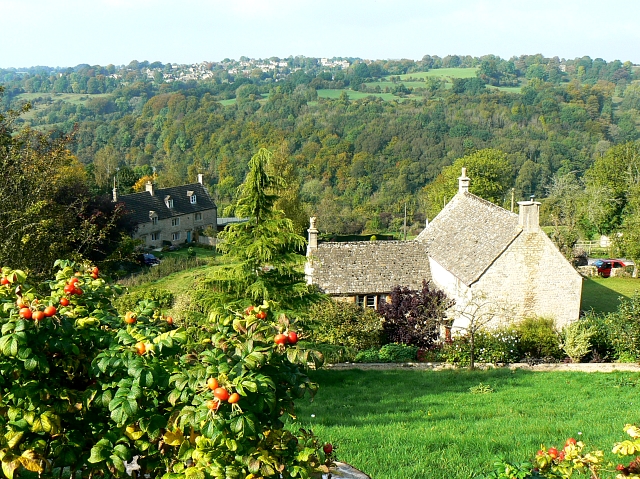
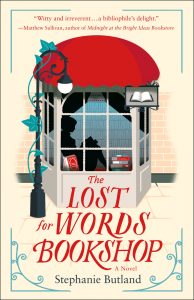
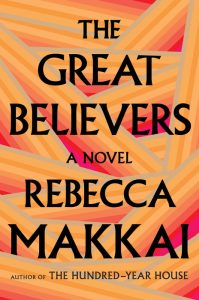 Affirming lives lost to HIV/AIDS in the early years of the crisis and the survivors who loved and cared for them (Boystown, Chicago 1985 to 1992; Paris 2015): While writing this, I’m listening to Simon and Garfunkel harmonizing America in Central Park, 1981. It was Nico’s favorite song, the pivotal character in The Great Believers whose death from HIV/AIDS in 1985, when Rebecca Makkai’s brilliant third novel opens, changes the lives of her two main characters – Yale and Fiona – forever.
Affirming lives lost to HIV/AIDS in the early years of the crisis and the survivors who loved and cared for them (Boystown, Chicago 1985 to 1992; Paris 2015): While writing this, I’m listening to Simon and Garfunkel harmonizing America in Central Park, 1981. It was Nico’s favorite song, the pivotal character in The Great Believers whose death from HIV/AIDS in 1985, when Rebecca Makkai’s brilliant third novel opens, changes the lives of her two main characters – Yale and Fiona – forever.